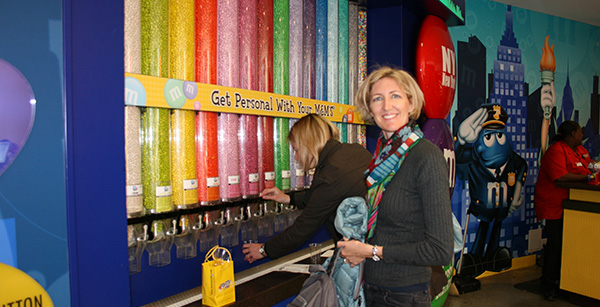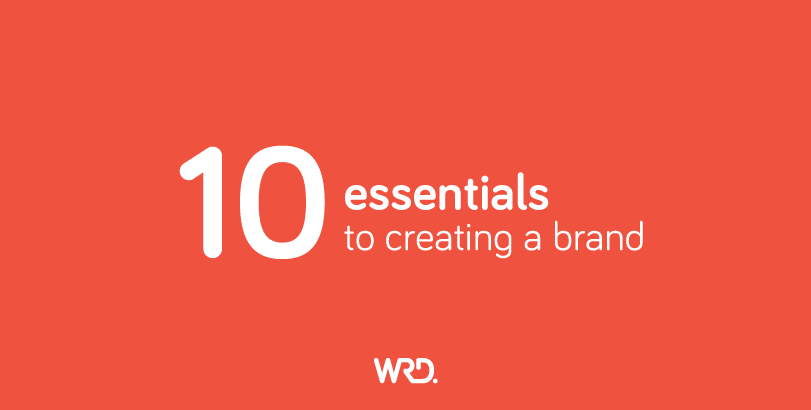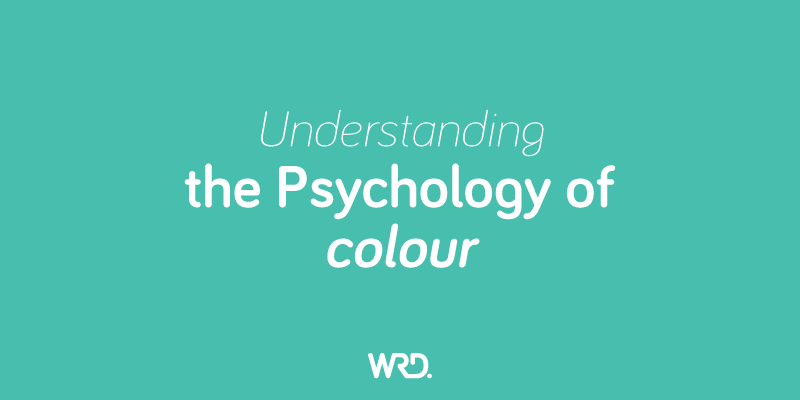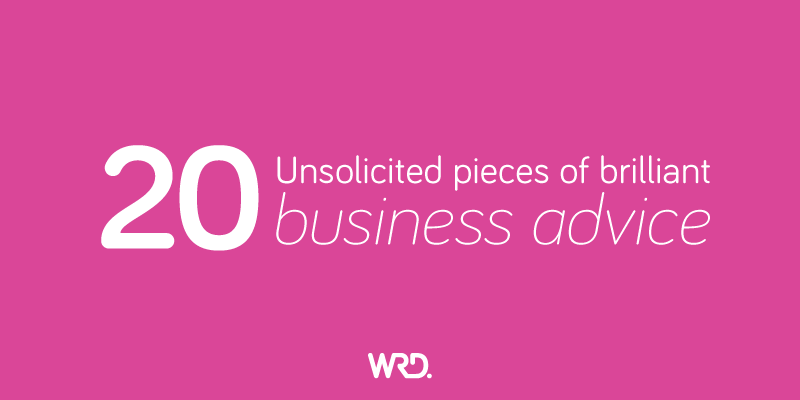10 Essentials needed to create a brand
1. Know Your Brand Story
Brands that have a good story tend to be more believable than those that don’t. People relate to stories so if you have a relevant and enticing one, you will attract the right people who will not only love and trust your brand, but they will become loyal followers and advocates. Stories are a great way to position yourself in the market, set a culture and provide a strong message for your brand. These stories don’t have to be elaborate or over the top, in fact simple is always best. Remember to tell your brand story often and ensure that all people involved in the business know the story too and are able to tell it well.
2. Logo
Yes, you do need a logo. Think of the big international companies, they all have distinctive logos. In general, the simple designs that are easy to reproduce across multi media such as print, online, silk screening, embroidery or signage are the more memorable logos. Think Apple, IKEA, Nike, Volkswagen to name a few. We often see logos that have been created with drop shadows, fancy effects or trendy fonts, that don’t translate well across platforms, nor do they pass the test of time. These logos land up looking terrible, become outdated quickly and immediately damage the brand from a visual perspective. Remember, that like a house needs good foundations, so too does your brand, and your brand foundation is your logo. It is essential to get a professional who knows what they are doing to create or evolve your logo. Your business is too precious to leave this important stage in the hands of your cousin’s girlfriend’s brother who is studying design!
3. Collateral
What do I mean by collateral? This is the collection of media from business stationery, brochures, annual reports and adverts through to your website, newsletters and signage to name a few. Your brand needs to be consistently followed through all these areas to ensure that not only does the look stay true to the brand, but that the message does too. You need to ensure that all of your collateral matches so that if I were to pick up your business card, then head to your website or later see your sign written vehicle on the road, that they would all match. There is no excuse for not keeping true to your brand image. Not having enough cash for a professional design is not a good enough excuse – this is your business and it deserves to be invested in. This is the visible aspect of your brand that is so vital in attracting people to your service or product. To become front of mind, consistency is king. Imagine if McDonalds kept changing the colour of their ‘golden arches’? Everyone can do this quick test… Put all of your printed items on your desk next to your computer with your website visible. Does it look like it belongs together? If not, you need to work on building a more consistent image for your brand. Having a company style guide is a great way to ensure that everyone in your organisation represents the brand correctly.
4. Language and Tone
It is really important for you to know and understand the ‘personality’ of your brand. What I mean is, is your brand fun, youthful, creative, serious, adventurous, caring, sensual or down to earth? There are many different personalities that your brand could be – we like to use the Brand Archetypes developed by Swiss philosopher, Carl Jung. Once you know your personality type, it makes it a lot easier to know what language and tone to use in your collateral and correspondence with your audience. If your personality/brand is fresh, youthful and energetic such as Boost Juice, then you can use entertaining and fun words in your material. However, if your brand and message is serious such as the Roads Authority, then a more sober or thoughtful tone might be used, such as the speeding advert with the doctor stating, “I wish I wasn’t in this ad.” Knowing your personality and target audience is essential in setting the correct tone and language to represent your brand.
5. Dress code
What you and your team wear also directly affects your brand. Having someone wearing a tracksuit and sneakers to work in an office environment is inappropriate, however if you’re a personal trainer, wearing these clothes would be very acceptable. Likewise, if women wear clothing that is too revealing or a man has constant body odour, these are issues that need to be addressed if they are not brand appropriate. Dress code is often an area of branding that people overlook, but it is an extremely important aspect as it is a visual cue that can make or break a first impression.
6. Systems
Having strong systems in place is critical to the success of a brand. Ensuring that there is a system from the answering of a phone to the finalising of a sale is critical to the success of a brand. I recently visited the Apple store in New York where I was amazed that even though it was triple the size of the Apple store in my home town, the process of them dealing with their customers was exactly the same. Without systems in place to ensure a consistent level of service, your clients could have a good experience one visit and a bad experience the next. Document your systems and ensure that all staff are correctly trained so that the customer has a good experience each and every time.
7. Create an Experience

There is nothing more enjoyable that going to your favourite cafe and receiving your coffee the way you like it each and everytime. Even better is when the staff smile and acknowledge you, and even better, if you’re a regular customer, they call you by name. The simple experience of getting your coffee becomes an enjoyable one, which if executed correctly, will ensure that the customer keeps coming back. When I was in New York I visited the M&M Store – what an eye opener and a great experience too! I was able to get a cup of M&M’s personalised for my children. The staff were so happy and engaging – quick to help and had a clever way of getting customers to purchase a bigger cup of M&M’s – clapping when a customer took up the offer. The experience of choosing what was to go on the M&M’s, picking the colours and then sending them down the M&M shoot for personalising was not only entertaining but exciting too. My three friends and I all decided to purchase these over priced souvenirs simply to go through the experience and marvel at the outcome. Giving clients the opportunity to experience your brand is essential. It is worth spending time coming up with an experience that will not only enhance the customers time dealing with your company, but will leave a lasting memory.
8. Own Your Area
The reality is that you’re unlikely to build a brand as big as CocaCola or Nike, but you may be able to build a strong brand of your area of expertise in your demographic zone. Earlier I did the fun exercise of you guessing the brand by simply stating ‘fast food’, ‘safe car’ or ‘soda drink’. These words prompted you to think of the brands that dominate these words. By building a brand in your geographic area or with your direct target audience, you too can own your area of expertise. Some brands are so strong that they have even started to ‘own’ the product area that they are in, such as cling wrap being referred to as Glad Wrap or adhesive bandages as Band Aids. This is not something that happens quickly or easily, and it means that constant focus on your main message needs to occur on a regular and consistent basis. If you deviate or change direction you can cause brand confusion which is often hard to recover from.
9. Have a slogan
“The burgers are better at…”
“Lucky, you’re with…”
“Have a break, have a…”
I don’t think that I need to give the answers to these as they are all extremely well known and can even be answered by children who constantly hear their brand messages being repeated on TV, the radio or paper. This constant repetition of the same consistent message ensures that the slogan becomes a huge part of the brand equity. “Not happy Jan”, from a Yellow Pages advert has become part of the Australian culture while ‘Google’ has become a verb as well as being a pro noun. A slogan can not only add interest to your brand, but it may relate to a core message that you are wanting to send. Once again, spend some time working on this to get it right the first time. You don’t want to keep changing your slogan too often as this will once again cause brand confusion.
10. Train Your Team
Training your team is essential in being able to maintain your brand. If everyone knows how to behave, talk and dress, the chances of the brand maintaining its correct message are much higher than if your team is untrained. Let’s take McDonalds for example, staff are trained in the systems and procedures so that even a 15 year old will be able to provide the exact same service as a 20 year old.
If you are still confused about your brand personality, story or direction, please contact our award winning creative team. Here is a link to our Sydney Design Award winning brand as well as our online portfolio which demonstrates how we have been able to transform businesses into brands. Our WRD team are branding specialists who really know how to create magic! Give us a call on 1300 722 896.
Written by branding specialist Debbie O’Connor
Consultant, Strategist, Keynote Speaker




